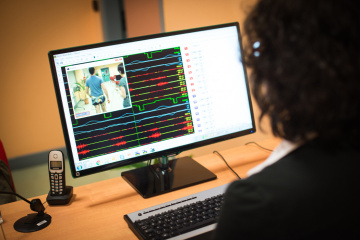Gait analysis
Gait analysis is widely used in clinics to study walking abnormalities for surgery planning, definition of therapeutic and rehabilitation protocols, and objective evaluation of clinical outcomes. Among the principal applications of clinical gait analysis in orthopedics there are: pre- and post-surgery evaluation of total-knee replacement, total hip arthroplasty, and anterior cruciate ligament reconstruction. In patients suffering from neurological disorders, clinical gait analysis is a valuable tool in the quantitative assessment of their residual walking ability, to design rehabilitation interventions based on the patient’s specific needs.
Gait analysis provides objective, reliable, and repeatable measures of locomotion impairments through the acquisition and analysis of foot-switches, electrogoniometric, and electromyographic signals.
This research line is focused on the quantitative and operator-independent assessment of the walking ability in different pathological conditions.

Pubblicazioni attinenti:
Agostini V., Nascimbeni A., Gaffuri A., Imazio P., Benedetti M. G., Knaflitz, M. Normative EMG activation patterns of school-age children during gait, Gait & posture, vol. 32, pp. 285-289, 2010. hld:11583/2371396
Agostini V., Knaflitz M. Statistical Gait Analysis. Distributed diagnosis and home healthcare (D2H2), vol. 2, 2012. hdl:11583/2496001
Agostini V., Balestra G., Knaflitz M. Segmentation and classification of gait cycles, IEEE Transactions on Neural Systems and Rehabilitation Engineering, vol. 22, pp. 946-952, 2013. hdl:11583/2519715
Agostini V., Ganio D., Facchin K., Cane L., Carneiro S. M., Knaflitz, M. Gait parameters and muscle activation patterns at 3, 6 and 12 months after total hip arthroplasty, The Journal of arthroplasty, vol. 29, pp. 1265-1272, 2014. hdl:11583/2522444
Agostini V., Lanotte M., Carlone M., Campagnoli M., Azzolin I., Scarafia R., Knaflitz, M. Instrumented gait analysis for an objective pre-/postassessment of tap test in normal pressure hydrocephalus, Archives of physical medicine and rehabilitation, vol. 96, pp. 1235-1241, 2015. hdl:11583/2592700
